Rules for connecting RCDs to a single-phase network with grounding: briefing on the work
Electric energy is used everywhere and actively in the housing sector. This is one of the main energy resources, the use of which, however, is completely unsafe. In order to ensure safety, different protection methods are used.
In particular, connecting an RCD to a single-phase network with grounding prevents a person from getting electric shock, equipment damage, and fires in electrical wiring. But in order for the device to be able to perform these tasks, it is necessary to choose the correct protective device and correctly integrate it into the electrical network.
Our article is devoted to the solution of these issues. We will tell you what parameters it is important to consider when choosing an RCD, we outline the requirements for the installation of the apparatus, and also describe the procedure for connecting the device to a single-phase network.
The content of the article:
What protective measures does the RCD provide?
Of course, the introduction of protective devices in the power supply system is accompanied by certain rules. Consider those in relation to the installation RCD.
The protective module from a series of such devices is designed as a universal device, so most models are designed to protect against various negative manifestations in the process of using electrical networks.
RCD operates in three areas of protection:
- prevention of electric shock;
- breakdown of circuits with subsequent leakage of current to the equipment body;
- short circuit wiring.
It should be noted: all three directions of protection work most efficiently provided that the device is connected according to a grounding scheme.
In fact, a scheme without the participation of “land” is not excluded (and often applied). However, with this option, the efficiency of the device decreases significantly.
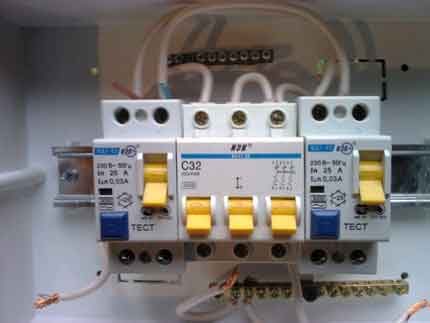
RCD devices are considered an obligatory component of switchboards for any purpose - permanently installed, temporary, portable.
Often they built into outlet designs or plugs, through which the tool and household appliances connected in humid, dusty rooms are connected.
Device selection based on design parameters
The process of designing electrical installations by specialized design organizations should include a rather complex task choosing the right RCD from the assortment of the electrical equipment market.

This task is really difficult. The modern market of electrical appliances, including RCDs, is characterized by a peculiar assortment. This is the result of the lack of strict quality control by government agencies.
There are many different devices on the market made by a large number of manufacturers, many of which do not always adhere to current standards.
There is nothing left for the potential owner of the RCD to receive information that the device manufacturer provides. A guarantee supplement is a certificate of conformity and fire safety.
The absence of such documents for the goods sold is a direct prohibition on installation and operation, in accordance with the requirements of current standards.

The choice of RCDs is always accompanied by the consideration of operating operational parameters and characteristics, which largely determine the quality and reliability of the device.
It is necessary to take into account the nominal indicators:
- voltage;
- current;
- differential current cutoff.
These main characteristics must correspond to the technical parameters of the designed electrical installation or the operated electrical circuit.
The quality and reliability of the RCD operation is determined by some indicators, the general physical meaning of which is often obscure.
These parameters are, first of all, the nominal conditional short-circuit current and the current of the rated on / off ability.
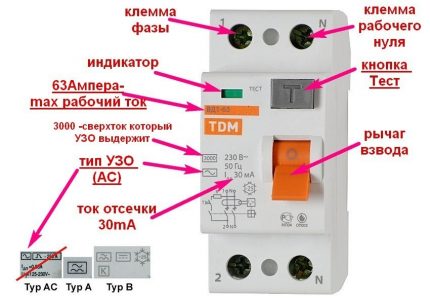
Rarely, UZO manufacturers note in the documents for devices all the marked characteristics. Therefore, it is necessary to correctly evaluate all the advantages and disadvantages of the selected devices.
From the point of view of technical design, RCDs are traditionally characterized by a switching device, whose action is determined by the standby mode. The device has no signs that help visually determine the quality of work.
But there is a single principle on the basis of which such devices function identically. The device is included in the operating current circuit and if a leakage current appears with a certain value exceeding the setting value, the RCD simply opens the power circuit.
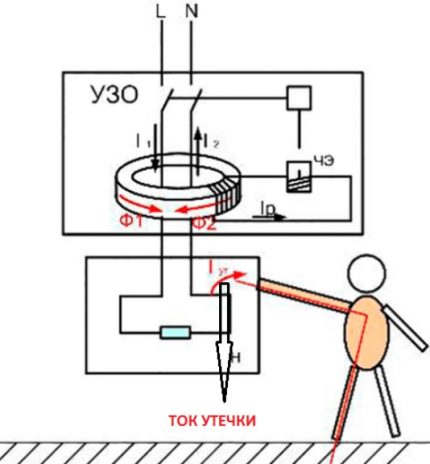
How correctly is opening done? Evaluate the speed of the device circuit, switching ability, service life and other significant parameters, it is possible only by specialized tests.
Rules for connecting the device
There are standards that determine the normal conditions for the installation and subsequent operation of the RCD. These standards are fixed, in particular, by the documents GOST R 51326.1-99 and R 51327.1-99.
Therefore, the following criteria must be adhered to, applying in practice RCDs:
- optimal ambient temperature range -5 + 40 ° C;
- the value of relative humidity is not higher than 50% at + 40 ° C and not higher than 90% at + 20 ° C;
- boundary value of height above sea level 2000 m;
- lack of powerful magnetic fields in close proximity to the device.
According to GOST R 50571.3-94, for connecting circuits in buildings, an important and necessary condition for the normal operation of the RCD as part of the building's electrical installation is the absence of any connection between the zero working conductor and the grounded electrical components and the “earth” protective conductor PE in the zone of its operation.
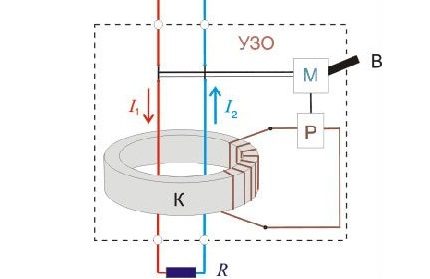
For the TN-C-S grounding system, in switchboards of electrical installations, at the points where the PEN conductor is separated, separate clamps or busbars should be provided for zero working N and zero protective PE conductor.
Given that the RCD device responds to an “earth” leakage of both the neutral and phase conductors, as a rule, it should be installed on the lines circuit breakers.
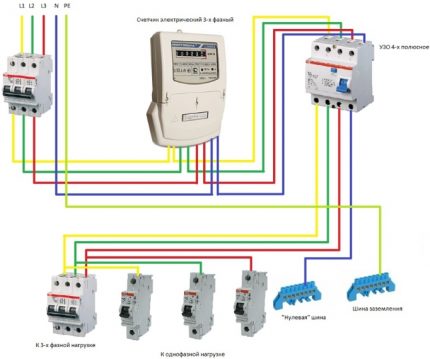
The introduction of circuit breakers allows you to quickly identify a faulty section of the circuit by turning off individual lines one at a time.
Thanks to the automatic machines, the “ASU” dismantling is excluded when a faulty section is detected, including a section with a leak through the neutral conductor.
GOST R 50571.9-94 contains specific instructions aimed at performing actions to protect the zero working and zero protective conductors.
Work done by professional services
Theoretically and practically also with the participation of specialists, the installation of RCDs involves the implementation of measures to determine the threshold of the device.
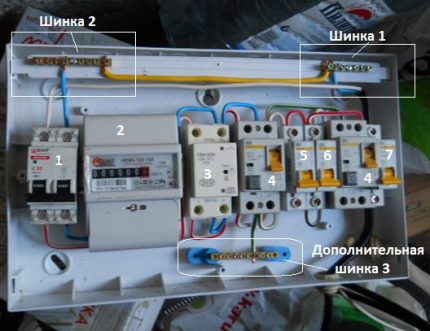
There are established rules - a kind of briefing, where the entire sequence of actions in such cases is noted.
Progress:
- First of all, the load circuit is disconnected from the device in phase and zero, for which a circuit breaker is used.
- Further, the connection scheme of the RCD measuring equipment and adjustment elements (potentiometer) is used.
- By changing the resistance of the potentiometer, the device is tripped and the current readings are recorded on the measuring device.
The marked value of the measuring device at the moment of operation is the residual current of the RCD. The recorded current reading should be in the set range.
If the condition is not met, the installation of a protective device in the circuit is prohibited. It is necessary to choose another instance that is suitable for the parameters.

When connecting protective devices such as RCDs with grounding, the rules also assume that work is carried out aimed at measuring the leakage current within the protection zone of the device.
Typically, such events are mandatory for cases of installation of electromechanical devices:
- Through the machine, the load is connected to the protection device.
- According to the test circuit, a measuring circuit consisting of a resistance store and an ammeter is connected to the device.
- Changing the resistance store, they achieve the operation of the device and record the readings of the ammeter.
- The leakage current is calculated by the formula: Iu = I - Ia, where I is the disconnecting circuit current, Ia is the ammeter reading.
The obtained value of Iu should not exceed the rated value of the residual current of the RCD by more than one third.
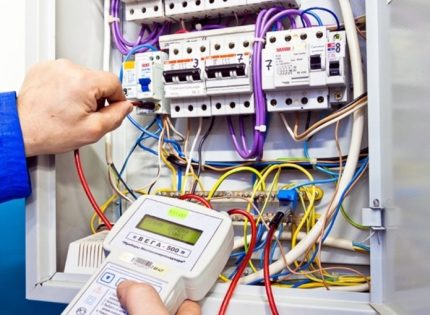
If such an excess is recorded, this is a clear sign that a defective area is located within the protection zone of the device. For such cases, the rules of the EMP require the implementation of the necessary measures aimed at eliminating the leakage current.
Domestic installation training
The introduction of RCDs into the household electrical network, subject to the settings made for the power grid parameters, is carried out in compliance with a number of requirements.
The list of mandatory rules:
- Mount on the input line and connect the device only after the circuit breaker. Usually an intermediate link between two devices is also an electricity meter.
- Installation work is carried out with a completely de-energized supply line.
- The rated current of the machine is chosen equal to, or slightly less relative to the value of the differential current of the device.
- Connections should be made in strict accordance with the designations and the attached diagram of the manufacturer.
- First of all, connections are made on the load side with the phase and zero bus lines to the corresponding terminals of the device.
- The terminal screws are tightened with some force sufficient for reliable connections, but without excessive force.
- Lastly, after checking the reliability of all connections and the absence of defects, the device is connected to the output terminals of the machine.
Attitude to the installation, configuration and commissioning of the protective device does not tolerate formalities. All actions must be performed carefully, with accurate calculation and duplicate checks.
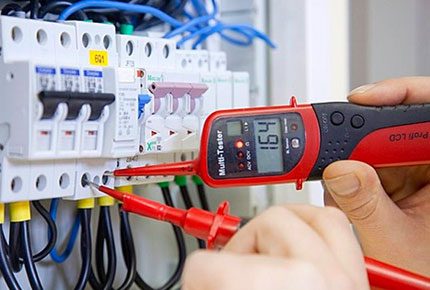
In the conditions of operation of domestic household networks, they often try to resolve the issue connecting RCDs and machines on their own.
However, this option does not guarantee security. You should always choose a professional installation - with the participation of specialists.
Conclusions and useful video on the topic
This video clearly describes and demonstrates how the protection device is included in the power circuit. Various schemes are considered:
Having familiarized yourself with the rules for connecting an RCD and the procedure for performing work, as well as with the features of installation in a single-phase network with grounding, you can try to do it yourself.
However, this option is justified only if you have a configured protection device and certain skills in conducting electrical work. Otherwise, the best solution would be to invite an electrician.
Have experience connecting RCDs yourself? Please tell readers about the nuances of choosing a suitable protection device and the features of its installation. Comment on the publication, participate in discussions and add photos of your homemade products. The feedback block is located below.

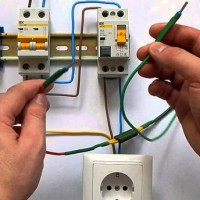 Rules for connecting an RCD to a single-phase network without grounding: the best schemes + operating procedure
Rules for connecting an RCD to a single-phase network without grounding: the best schemes + operating procedure 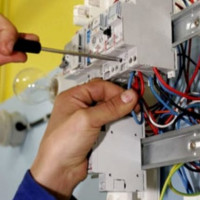 RCD for a water heater: selection criteria + schemes and connection rules
RCD for a water heater: selection criteria + schemes and connection rules 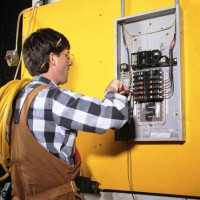 How to connect an RCD: circuits, connection options, safety rules
How to connect an RCD: circuits, connection options, safety rules 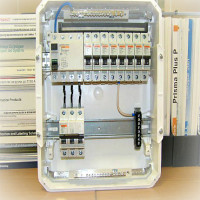 Features of connecting automatic machines and RCDs in the shield: circuits + installation rules
Features of connecting automatic machines and RCDs in the shield: circuits + installation rules 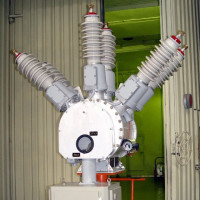 Gas-insulated switches: reference points and connection rules
Gas-insulated switches: reference points and connection rules 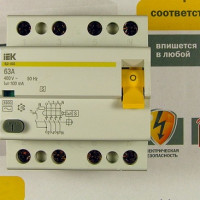 Selective RCD: device, purpose, scope + circuit and connection nuances
Selective RCD: device, purpose, scope + circuit and connection nuances  How much does it cost to connect gas to a private house: the price of organizing gas supply
How much does it cost to connect gas to a private house: the price of organizing gas supply  The best washing machines with dryer: model rating and customer tips
The best washing machines with dryer: model rating and customer tips  What is the color temperature of light and the nuances of choosing the temperature of the lamps to suit your needs
What is the color temperature of light and the nuances of choosing the temperature of the lamps to suit your needs  Replacement of a geyser in an apartment: replacement paperwork + basic norms and requirements
Replacement of a geyser in an apartment: replacement paperwork + basic norms and requirements